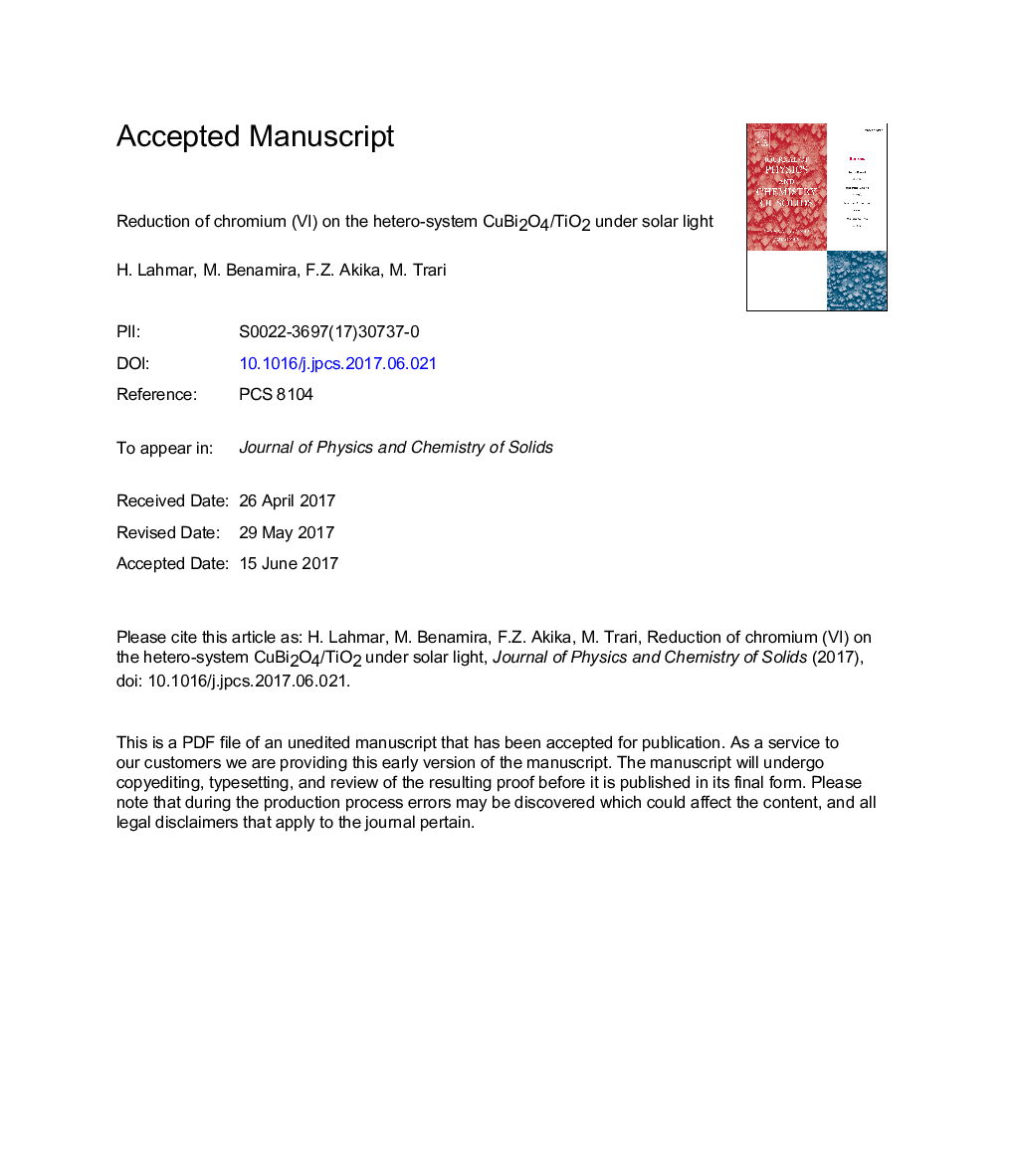| Article ID | Journal | Published Year | Pages | File Type |
|---|---|---|---|---|
| 5447230 | Journal of Physics and Chemistry of Solids | 2017 | 24 Pages |
Abstract
The CuBi2O4/TiO2 heterojunction was tested with success for the photo-catalytic reduction of chromate ions under sunlight. CuBi2O4, prepared by nitrate process, was characterised photo-electrochemically. The oxide is stable against photo corrosion by consumption of holes in presence of oxalic acid. The light absorption promotes electrons in the conduction band of the sensitizer (CuBi2O4) with a very negative potential (â1.74 VSCE) to participate in the exchange of the electron with HCrO4â. The enhanced activity is due to electron injection of activated CuBi2O4 into TiO2-CB (â0.97 VSCE). The band gap of the semiconductor CuBi2O4 is 1.50 eV with a direct optical transition. This compound is a p-type semiconductor with a flat band potential of â0.39 VSCE and activation energy of 0.18 eV. The electrochemical impedance spectroscopy was undertaken to study the semiconductor/electrolyte interfacial phenomena. The photoactivity on the heterojunction is strongly enhanced. A remarkable performance is obtained in less than 4 h for a concentration of 30 mg in (Cr (VI)) at pH â¼Â 4 and a dose of 1 mg/mL; a 98% reduction has been obtained. The kinetic of chromate photoreduction is well described by the Langmuir-Hinshelwood model. The chromate elimination obeys to a pseudo-first order kinetic with an apparent rate constant of 0.014 minâ1.
Related Topics
Physical Sciences and Engineering
Materials Science
Electronic, Optical and Magnetic Materials
Authors
H. Lahmar, M. Benamira, F.Z. Akika, M. Trari,
